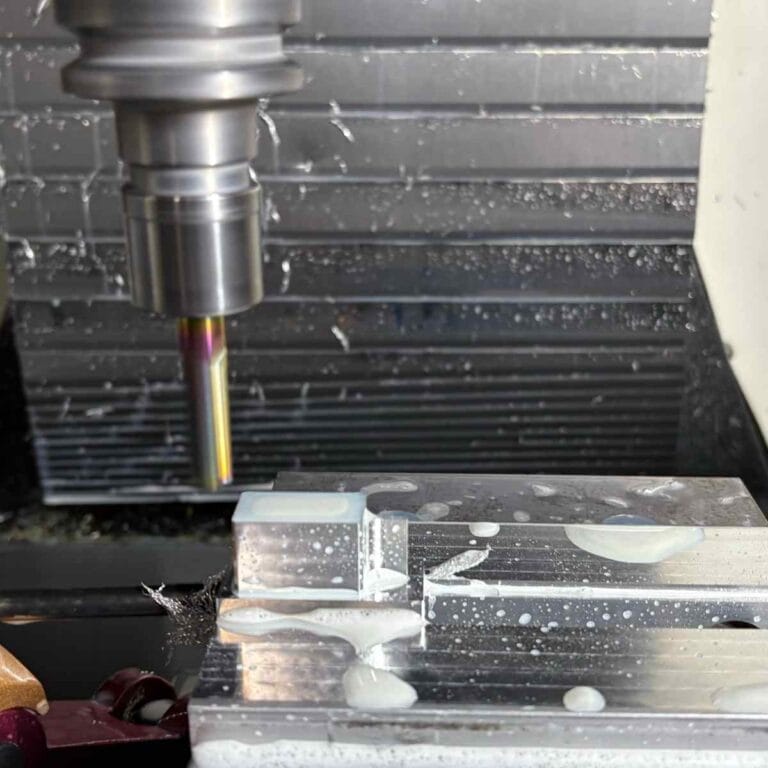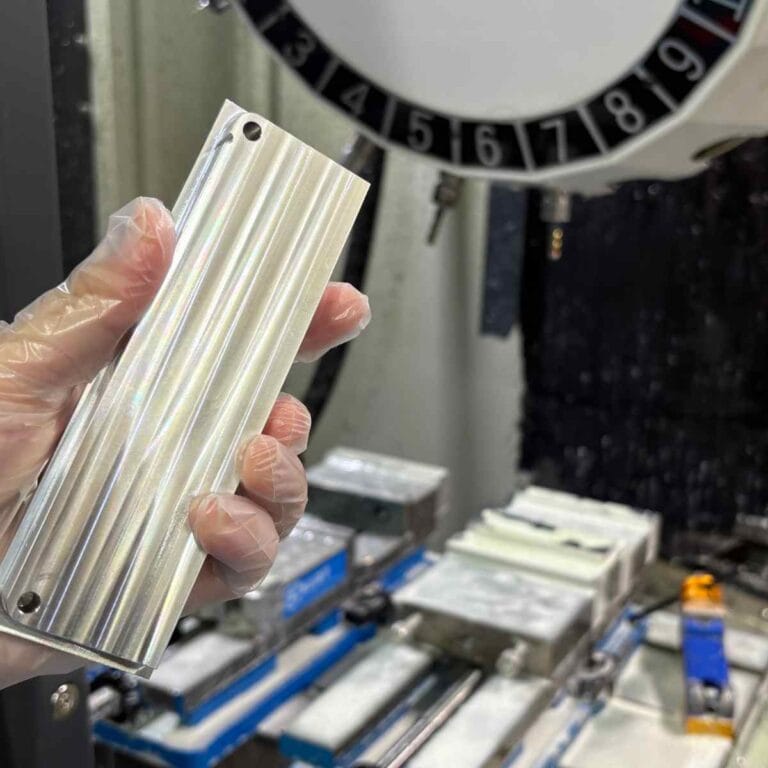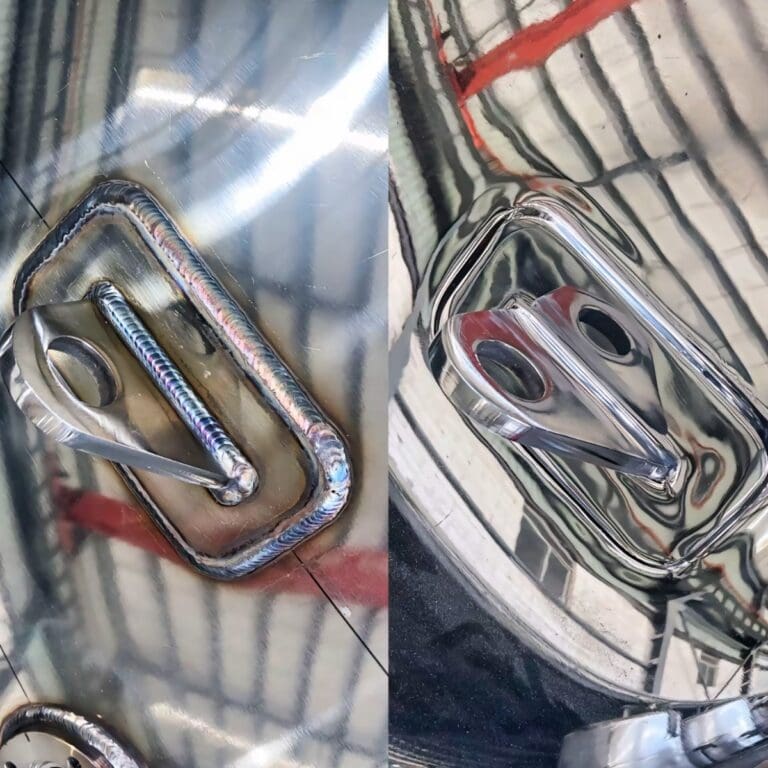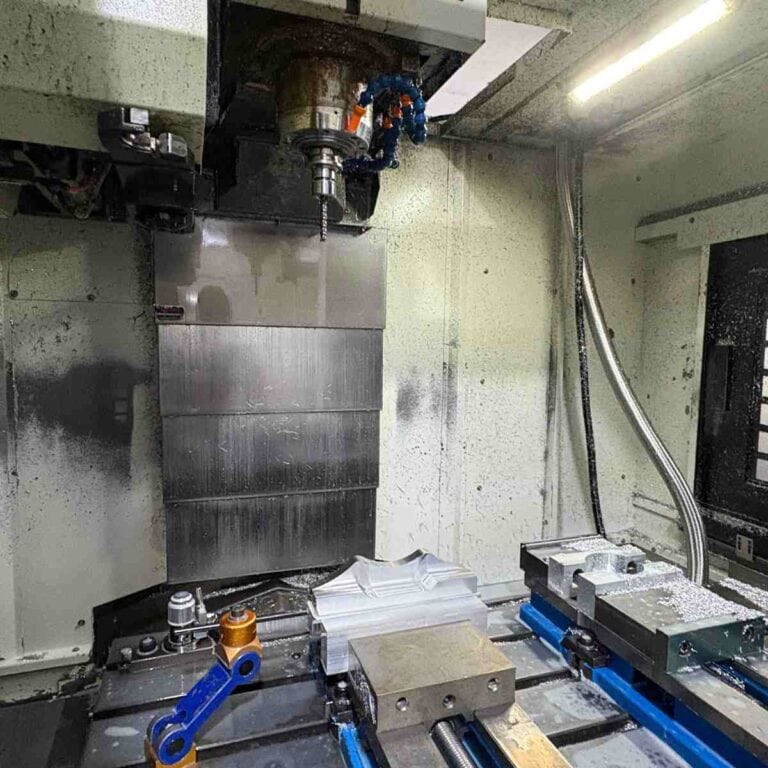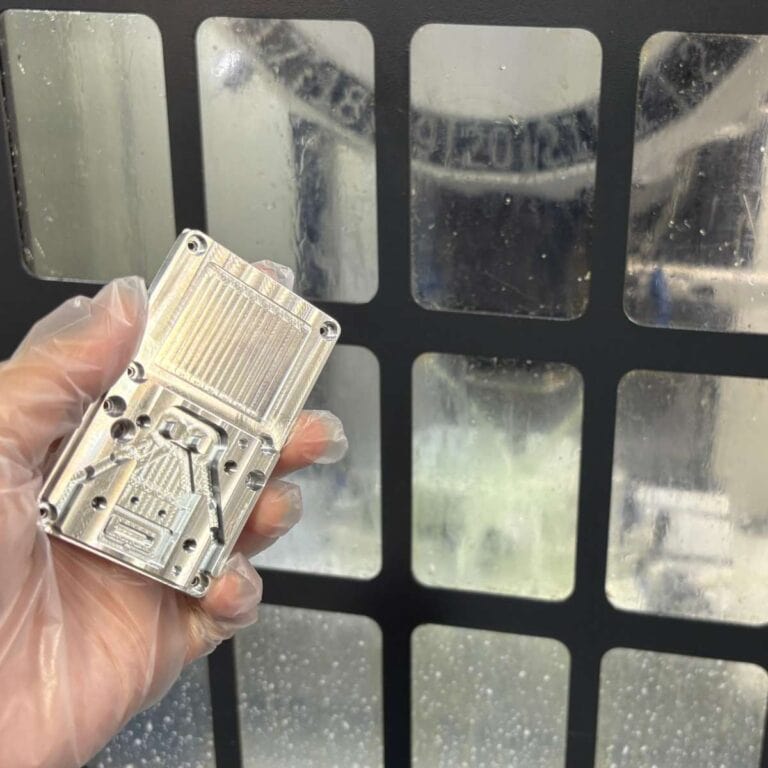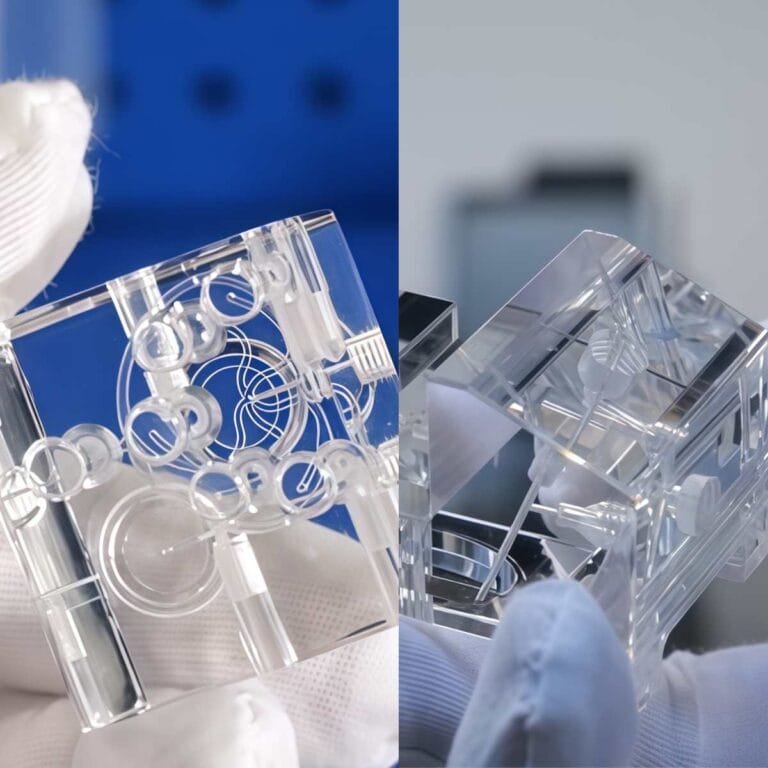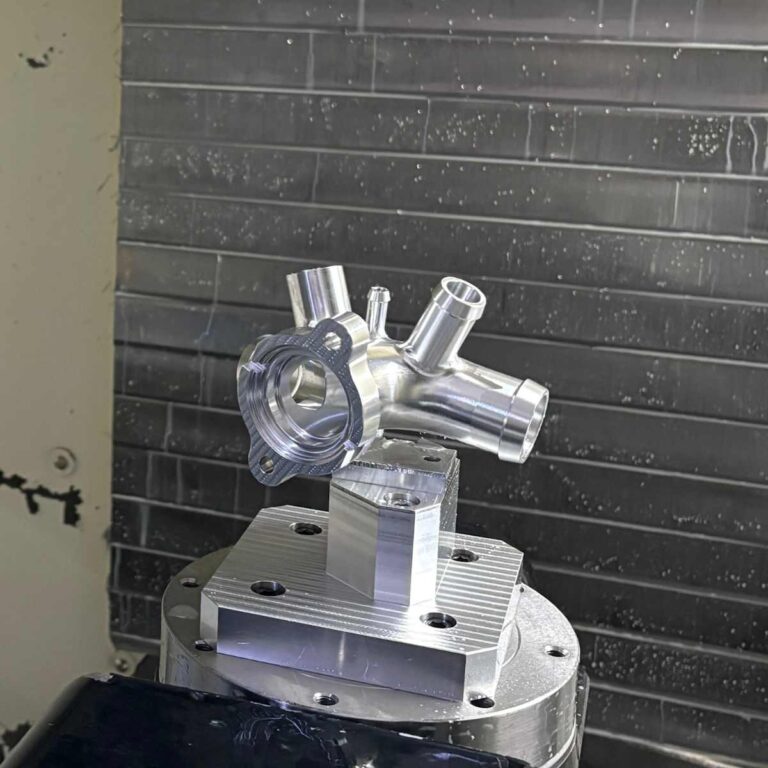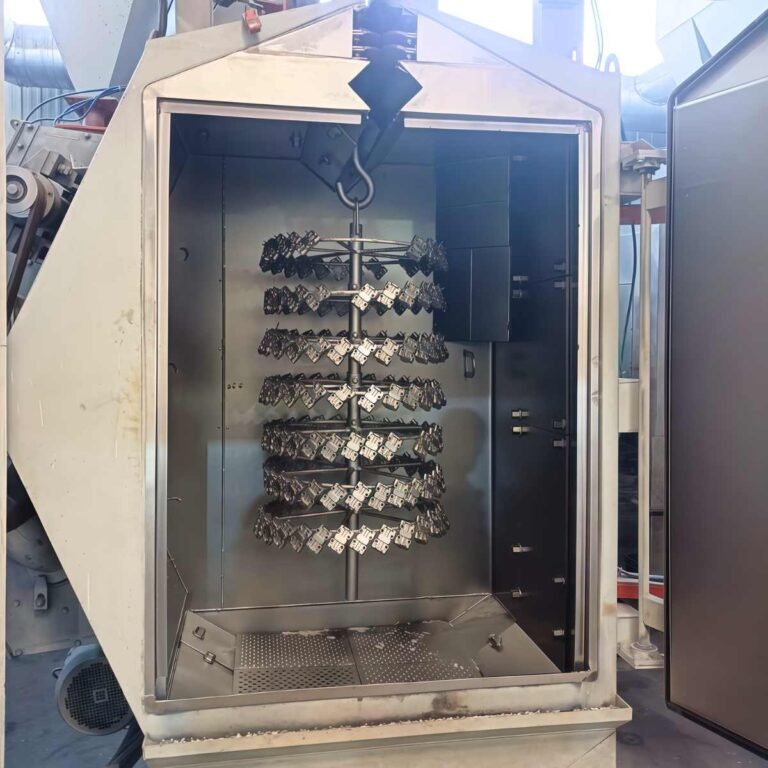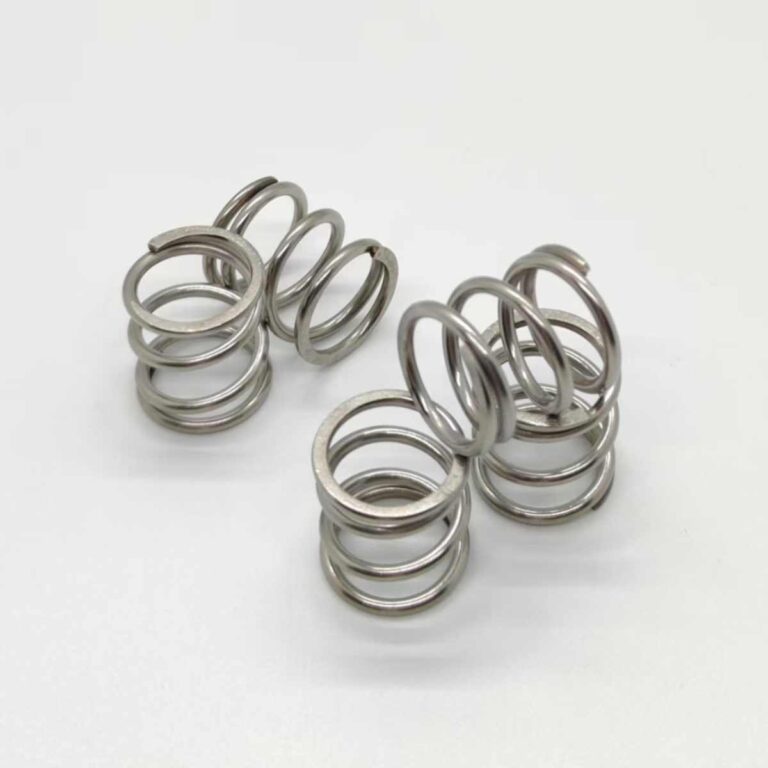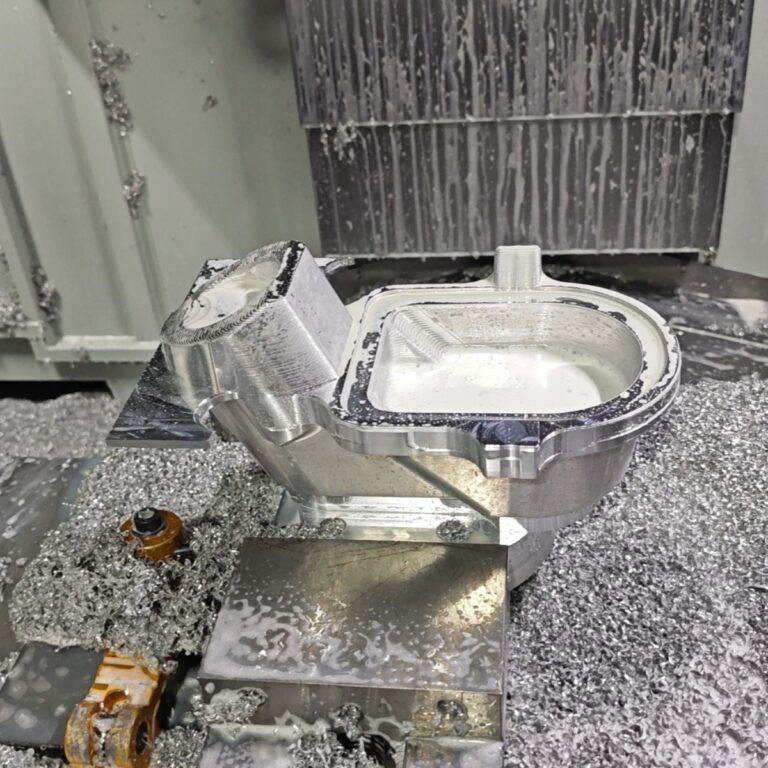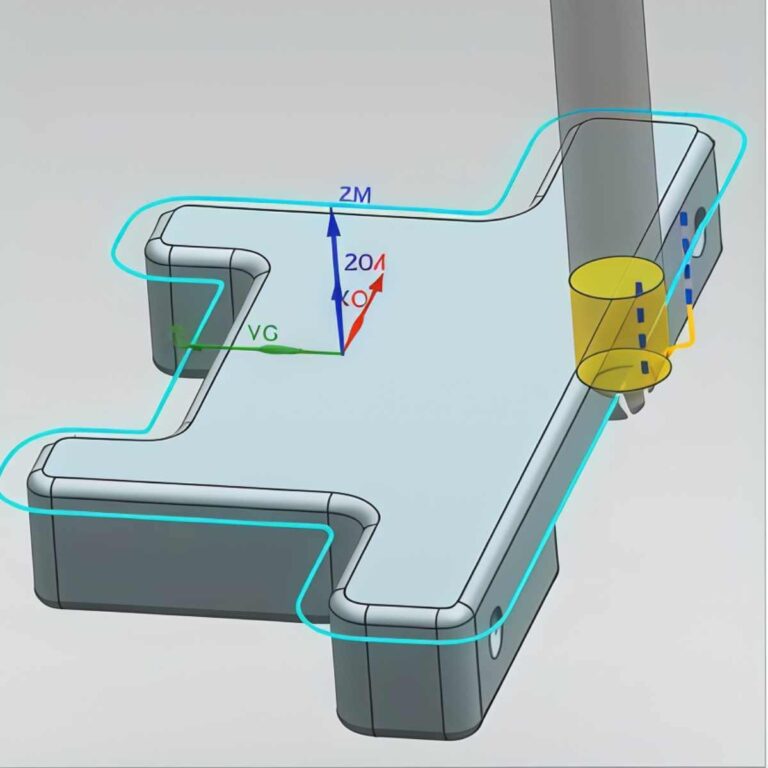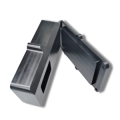Wire EDM and Laser Cutting are two common precision machining technologies in modern manufacturing. Wire EDM achieves high-precision machining by removing materials through electrical discharge, while laser cutting relies on high-energy lasers to quickly melt or vaporize materials, and has a fast cutting speed. Based on engineering practice and data analysis, I will analyze the advantages and disadvantages of the two, and combine actual cases to explore when to choose Wire EDM to ensure extreme precision and when to use laser cutting to improve efficiency, thereby optimizing production processes and machining quality.
What Is Wire Cutting EDM
Wire EDM is a technology that uses a continuously supplied thin metal wire as an electrode to perform precision machining on workpieces through spark discharge. This process was first developed in the mid-20th century and has become an important means of manufacturing high-precision parts after years of technical improvements.
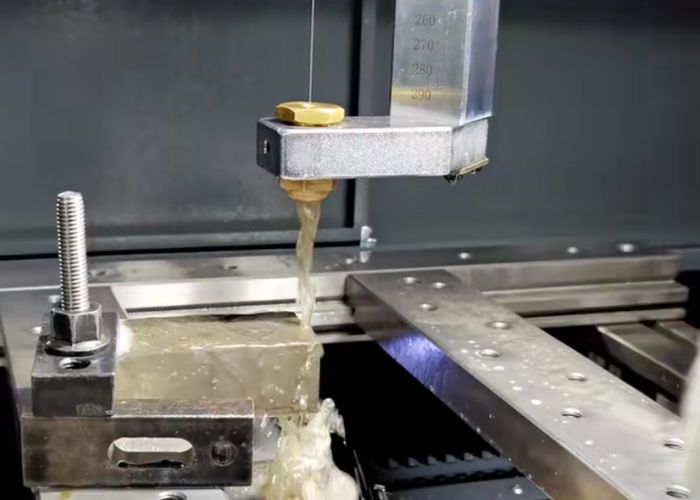
In my engineering practice, wire-cut EDM is often used to process conductive metals such as steel, titanium, and aluminum. Its tolerance range can usually be stabilized between ±0.001mm and ±0.005mm, and the surface roughness can be as low as Ra 0.4μm. For example, in the processing of a certain aircraft engine turbine blade, we successfully achieved the aperture tolerance control within 0.002mm, which far exceeds the accuracy requirements of traditional milling processes and provides reliable guarantee and data support for high-end manufacturing.
How Wire EDM Works
Spark Erosion Principle
During the wire cutting process, a very small gap is maintained between the thin metal wire (usually brass or galvanized wire) and the workpiece, usually between 0.01mm and 0.05mm. The gap is filled with high-purity dielectric fluid (such as deionized water), which not only serves as insulation and cooling, but also removes the tiny metal particles generated during the processing through high-pressure flushing. When a pulse voltage is applied, the gap between the electrode and the workpiece will be instantly broken down, generating local high temperatures of up to 8000°C to 12000°C. This extremely high temperature causes the local material of the workpiece to quickly vaporize or melt, forming a tiny molten pit, thereby gradually achieving material removal.
According to the data statistics from my multiple projects, this spark discharge process can occur thousands of times per second, thus ensuring continuous and uniform material removal, and ultimately achieving extremely high machining accuracy. By strictly controlling the gap voltage and pulse parameters, I have been able to stably control the machining error within ±0.003mm, ensuring the precision machining effect of the workpiece.
Material Removal Mechanism And Key Process Parameters
The material removal rate depends directly on the discharge energy and the physical properties of the workpiece material. In practical applications, I usually adjust the parameters such as pulse frequency, pulse width, current and dielectric fluid flow rate according to the characteristics of different materials (such as steel, titanium, aluminum).
For example, when processing 50mm thick SKD11 mold steel, we use a brass wire with a diameter of 0.25mm. When the pulse current is set to 3-10A and the pulse frequency is in the range of 50-500kHz, the typical etching speed is 5-10mm²/min. The dielectric fluid flow is controlled at 8-15L/min, ensuring stable temperature in the processing area and timely removal of waste chips, thereby reducing the overall processing error to within ±0.003mm. The optimization of these key parameters makes the entire spark erosion process both efficient and accurate, providing strong support for the high-precision processing of complex parts.
Materials Can Be Processed By Wire Cutting
Wire EDM is suitable for a variety of conductive materials, such as steel, titanium alloy, aluminum, brass and graphite, especially high-hardness metals that are difficult to process by traditional cutting processes. Its high precision and no cutting force make it widely used in mold manufacturing, aerospace, medical equipment and other industries.
Applicable Materials
Wire EDM is suitable for a variety of conductive materials. The most common ones I use in my projects are:
- Steel : For example, SKD11 mold steel, the hardness can reach HRC62, and the processing speed is about 5mm²/min.
- Titanium Alloy : such as Ti-6Al-4V, the processing speed is about 4mm²/min, and the surface roughness can reach Ra 0.4μm.
- Aluminum : For example, 6061 aluminum alloy, the processing speed can be as high as 8mm²/min.
- Brass andgraphite : Graphite processing speed can reach 10mm²/min and is often used in high-precision electrode manufacturing.
In an aviation project I participated in, wire cutting technology was used to control the machining tolerance of titanium alloy parts within ±0.003mm, ensuring the assembly accuracy of key components.
Tolerance And Surface Quality
Wire-cut EDM can achieve extremely high tolerance control. Its machining tolerance is usually between ±0.001mm and ±0.005mm, and the surface roughness can be as low as Ra 0.4μm. In actual projects, I have repeatedly used strict parameter control to ensure that the part size error is controlled within ±0.002mm, thereby greatly improving the product assembly quality and overall performance. These data have been fully verified in aviation and automotive projects, resulting in significantly improved product consistency and functional stability.
Advantages And Disadvantages Of Wire-Cut EDM
Wire EDM plays an important role in precision manufacturing due to its high precision and no cutting force. However, it also has certain limitations in production speed and cost. I will combine data and actual cases to deeply analyze the advantages and limitations of Wire EDM to help you determine when to prioritize this process .
Advantage
- Extremely High Processing Accuracy : Tolerance is controlled between ±0.001mm and ±0.005mm, suitable for micro parts and complex contours.
- Small Heat Effect : The heat affected zone (HAZ) in the processing area is usually less than 0.1mm, avoiding thermal deformation of the material.
- Suitable For Complex Geometric Shapes : It can process complex structures with an inner corner radius of less than 0.1mm.
In my project, by using wire cutting technology, the product defect rate was reduced by about 25%, and the overall assembly accuracy was greatly improved.
Shortcoming
- The Processing Speed Is Slow : for example, it may take 2 hours to process a 10mm thick steel plate, which is significantly lower than the efficiency of laser cutting.
- High Equipment Cost : The price of an entry-level model is about $200,000, and maintenance costs account for 15%-20% of the total cost.
These data show that although wire cutting has the advantage of high precision, its time cost and economic pressure are more obvious in certain mass production environments, and a trade-off needs to be made between precision and productivity.
Applications Of Wire Cutting EDM
Wire EDM plays an important role in many demanding industries due to its high precision, no cutting force and suitability for complex shape processing . Wire EDM can be used in aerospace, automotive manufacturing, medical equipment and electronic precision parts processing to ensure high precision and consistency of parts .
| Industry | Typical Applications | Key Data | Advantages |
| Aerospace | Titanium alloy structural parts, engine turbine blades | Dimension tolerance ±0.002mm, surface roughness Ra 0.4μm | High precision, suitable for high temperature resistant and difficult to process materials |
| Automotive | Transmission gear molds, fuel injection system parts | Assembly error reduced by 20%, mold life increased by 300,000 times | Ensure high consistency of complex shaped parts |
| Medical Devices | Surgical instruments, implants (such as orthopedic titanium alloy parts) | Processing tolerance ±0.003mm, suitable for biocompatible materials | No mechanical stress, ensuring parts are free of micro cracks |
| Electronic Precision Parts | Semiconductor lead frames, micro connectors | Processing accuracy ±0.001mm, minimum processing hole diameter 0.1mm | Suitable for ultra-precision micro-machining to improve product consistency |
| Mold Manufacturing | Injection molds, stamping molds | Mold durability increased by 20%-30%, accuracy ±0.005mm | Ideal processing method for complex surfaces and precision molds |
What Is Laser Cutting
Laser cutting is an advanced process that uses a high-energy laser beam to form an extremely high local temperature through precise focusing, so that the material can be quickly melted or vaporized for cutting. As an engineer who has been engaged in high-precision manufacturing for a long time, I have verified the high speed, high efficiency and excellent edge quality of laser cutting in many projects. This technology is often used to process metals, plastics and composite materials, and is particularly suitable for thin plate production.
Through actual data and cases, I will elaborate on the working principle, key process parameters, material compatibility, advantages and disadvantages of laser cutting, and explore its application effects in sheet metal, automobile body, sign making and decorative panels.
How Laser Cutting Works
The core of the laser cutting process lies in the generation, focusing and interaction of the laser beam with the material surface. First, the laser generates a high-energy laser beam, which is focused by a series of optical elements to reduce the laser beam to a micron-scale focus. The energy density at this focus is extremely high, which can quickly heat the target material to its melting point or vaporization temperature. In my practice, by optimizing the laser parameters, we control the focus diameter within 50μm to ensure smooth cutting edges and high precision.
Key process variables have a significant impact on cutting results. I usually focus on the laser power (common power range is 1-6 kW), cutting speed (for example, for 2-3mm thick plate, the cutting speed can reach 3-5m/min), and the flow rate of auxiliary gas (such as oxygen or nitrogen). The assist gas not only helps to evacuate the molten metal, but also creates a chemical reaction to increase the cutting speed. Through many experiments, I found that when the laser power is kept at around 4 kW and combined with high-pressure oxygen (pressure 0.8-1.2MPa), the cutting edge roughness can be controlled below Ra 1.2μm, which is significantly better than the traditional mechanical cutting method.
What Materials Can Be Processed By Laser Cutting
Whether it’s metal, plastic or composite materials, laser cutting enables precise, high-speed processing. It can be applied to metal materials such as mild steel, stainless steel, aluminum alloy, brass, titanium alloy, etc. It can also efficiently cut plexiglass, polycarbonate, ABS plastic, composite materials and ceramics.
In practical applications, the metal materials I often deal with include stainless steel, aluminum, copper and titanium. At the same time, for metal sheets with a thickness between 0.5mm and 10mm, laser cutting can provide excellent edge quality and low processing allowance. For plastics and composite materials, laser cutting can also achieve high-precision cutting, but the appropriate laser wavelength and power must be selected to avoid burning or deformation due to different material absorption characteristics.
In a car sign manufacturing project, we used laser cutting to process 2mm thick stainless steel, with smooth cutting edges and almost zero burrs, and in the manufacture of electronic product housings, when laser cutting aluminum with a thickness of 1-3mm, the surface roughness after cutting was less than Ra 1.0μm. These data prove that laser cutting has significant advantages in controlling processing accuracy and surface quality, and is particularly suitable for the manufacture of high-end products with extremely high requirements on appearance and details.
Advantages And Disadvantages Of Laser Cutting
Laser cutting is an efficient and flexible processing technology, which is widely used in the cutting process of various materials such as metals, plastics, and composite materials. Its advantages lie in high-speed cutting, good edge quality and wide material adaptability , which can significantly improve production efficiency, especially in thin plate processing . However, laser cutting also has certain limitations, such as limited accuracy, large heat-affected zone, and poor adaptability to thick materials .
advantage
- High-Speed Processing : Laser cutting is much faster than wire cutting in thin plate processing. For example, the laser cutting speed of a 3mm stainless steel plate can reach 30 mm/s , while the wire cutting speed is only about 5 mm/s , which increases the efficiency by about 60 times .
- Good Edge Quality : Laser-cut parts usually do not require secondary processing, and the cut surface is smooth with minimal burrs. Experimental data shows that CO2 laser cutting can control the edge roughness within Ra 3.2μm , greatly reducing the subsequent grinding process.
- Wide Range Of Material Adaptability : Laser can cut metals, plastics, composite materials and ceramics, especially suitable for carbon steel, stainless steel, aluminum alloy and brass . Compared with other processes, laser cutting is more adaptable in the processing of highly reflective metals (such as copper and aluminum), and the cutting efficiency can be increased by 30% .
electronic equipment casing manufacturing project I participated in , laser cutting significantly improved production efficiency, bringing the parts yield rate to 98% and shortening the production cycle by about 40% .
Shortcoming
- Limited Precision : The tolerance of laser cutting is usually between ±0.1–±0.3mm, which is difficult to meet ultra-high precision requirements compared to the ±0.005mm accuracy of Wire EDM. Especially in the processing of medical and aerospace precision parts, the accuracy of laser cutting may not meet strict requirements.
- Large Heat-affected Zone (HAZ) : Laser cutting is a high-temperature melting process, and the heat-affected zone is usually 2-0.5mm , which may cause changes in the material microstructure and affect the mechanical properties. For example, in the processing of titanium alloy parts, laser cutting may cause the local hardness to increase by 10%-15% , affecting subsequent processing.
- Not Suitable For Thick Materials : For metal plates thicker than 10mm , the efficiency and accuracy of laser cutting decrease significantly, while technologies such as water jet and wire cutting are more effective in thick plate processing.
A high-precision mold manufacturing project, I found that laser cutting performed excellently on 0.5mm thick stainless steel, but when the material thickness exceeded 8mm, the cutting quality dropped significantly and the heat-affected zone expanded, resulting in a 20% reduction in subsequent assembly accuracy .
Overall, laser cutting has obvious advantages in speed and material adaptability, and is suitable for large-scale, low-tolerance processing scenarios. However, for high-precision or heat-sensitive materials, it still needs to be combined with wire cutting or other processes to ensure the quality of the final product.
Laser Cutting Applications
Laser cutting can provide high-quality cutting results, less material waste and low maintenance costs in sheet metal processing, automobile manufacturing, aerospace, electronic equipment, medical equipment and other fields. Compared with traditional processing methods, laser cutting can complete the processing of parts with complex contours in a short time and greatly improve efficiency in mass production.
| Application Industry | Typical Parts | Laser Cutting Advantages | Practical Application Cases |
| Sheet Metal Processing | Cabinet housing, electronic chassis, metal frames | High precision (tolerance ±0.1mm), reducing secondary processing | In the production of electronic equipment housing, laser cutting has increased processing efficiency by 30% and reduced welding deformation. |
| Automotive | Body panels, exhaust systems, chassis components | Applicable to high-strength steel plates, supporting large-scale production | Laser cutting reduces stamping die costs by 50% in automotive sheet metal processing |
| Aerospace | Lightweight structural parts, engine components | Suitable for high temperature alloys and titanium alloys, reducing heat affected zone | Through laser cutting, we have successfully reduced the overall processing cost of aviation structural parts by 15% |
| Medical Devices | Surgical instruments, stainless steel implants, medical device housings | Precision cutting for biocompatible materials | The pass rate of laser cutting technology in high-precision medical device processing has increased to 98% |
| Electronics | Circuit boards, heat sinks, connector housings | Suitable for thin plate cutting to reduce material waste | We use laser cutting to complete the heat sink processing with an accuracy of ±0.05mm, which improves product consistency |
| Decoration And Signage | Stainless steel engraving plate, aluminum alloy sign | Smooth cut edges, no additional polishing required | In the building decoration industry, laser cutting reduces the cost of manual polishing and improves production efficiency |
Comparison Between Wire EDM And Laser Cutting
In my engineering practice, I often have to choose between extremely high precision and high-speed production. Wire EDM and laser cutting are two important processing technologies in modern manufacturing. Through systematic comparison, I found that these two technologies have differences in accuracy, tolerance, speed, material compatibility, cost and energy efficiency .
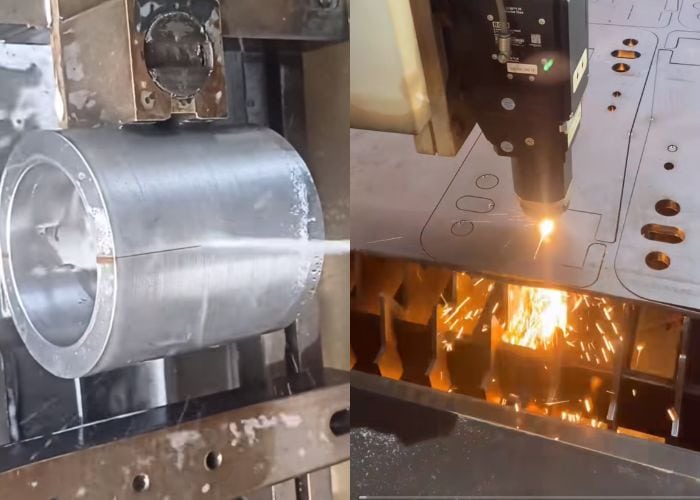
Precision vs. Tolerance
- I find that wire EDM is particularly good in terms of precision, with machining tolerances typically between ±0.001mm and ±0.005mm. For example, in the machining of high-precision aerospace parts, our measurement data shows that wire EDM can control dimensional deviations within ±0.002mm.
- In contrast, although laser cutting has an advantage in speed, its tolerance range is usually wider, usually around ±0.1mm to ±0.3mm. In an automobile body parts inspection, the average measurement error of laser cutting reached ±0.15mm, which makes it inferior to wire cutting in high-precision applications.
- In addition, the heat affected zone (HAZ) is also a key factor. Since wire cutting uses the principle of spark erosion, its heat affected zone is usually less than 0.1mm. However, due to the fast heat transfer speed of laser cutting, it may cause slight deformation on the cutting edge, affecting the tolerance stability. My data shows that after strict process control, the surface roughness of wire-cut workpieces can be as low as Ra 0.4μm, while laser cutting is usually around Ra 1.0μm.
Speed And Productivity
In terms of speed, laser cutting has a clear advantage. In a comparative experiment, I measured that for metal sheets with a thickness of 2-3mm, the cutting speed of laser cutting can reach 5m/min, while the speed of wire cutting EDM is generally between 1.5-2.5m/min, which is about 2-3 times faster.
This allows laser cutting to significantly shorten production cycles in large-scale production. For example, in a batch sign production project, laser cutting shortened the overall production cycle by about 40%, while when wire cutting was used, the cycle was extended by about 30% due to the slower processing speed.
However, high-speed cutting sometimes sacrifices some precision, so for tasks that require extreme dimensional stability, I still prefer wire EDM, even though it is slightly inferior in productivity.
Material Compatibility And Thickness Restrictions
I have found in different projects that wire EDM is suitable for machining various conductive materials, such as steel, titanium, aluminum, brass and graphite, and can maintain high-precision cutting for thicker materials (usually greater than 3mm). Data shows that for metal materials with a thickness of more than 5mm, the surface quality and dimensional stability of wire EDM can meet the expected goals.
In contrast, laser cutting is very suitable for thin materials, especially metal and non-metal materials with a thickness of less than 10mm. However, for reflective materials and thicker workpieces, laser cutting may produce cutting errors due to light reflection or heat diffusion problems. For example, when processing 10mm thick stainless steel, I measured the laser cutting error to be around ±0.2mm, while for 3mm thick aluminum plates, the error can be controlled within ±0.05mm.
These data illustrate that it is critical to select the appropriate processing technology based on material properties and thickness to ensure optimal processing efficiency and product quality.
Cost And Energy Efficiency Analysis
In terms of initial equipment investment, wire-cut EDM equipment is usually more expensive, with an entry-level model costing about $200,000 to $300,000, while the initial cost of laser cutting equipment is relatively low, usually between $100,000 and $150,000.
Maintenance costs are also a key factor: the maintenance cost of wire cutting equipment usually accounts for 15%-20% of the total cost, while the maintenance cost of laser cutting equipment is relatively low. In my actual project, by optimizing process parameters and regular maintenance, we reduced the operating cost of wire cutting by about 10%.
In terms of energy consumption, wire cutting consumes a lot of energy due to the spark discharge process, and its energy consumption data is about 8-10kWh per hour, while laser cutting consumes about 4-6kWh per hour under high-efficiency cutting conditions. According to data analysis of different production volumes, laser cutting has a higher overall cost-effectiveness in mass production, but in projects with extremely high precision requirements, wire cutting still shows irreplaceable value.
Application Suitability And Industry Trends
- Based on actual projects, I concluded that wire cutting EDM is the first choice for tasks that require extreme precision and process complex geometries, while laser cutting has more advantages for efficient cutting of large quantities and thin plate materials.
- In the future, with the continuous advancement of automation and software control technology, the two technologies may be more closely integrated, giving full play to their respective advantages and achieving hybrid processing. My forecast data shows that this hybrid process is expected to increase production efficiency by 20%-30% while further reducing processing errors.
- In general, decisions in different application scenarios should be based on multiple factors such as product requirements, material properties, cost budget and production cycle. Only through scientific data analysis and practical verification can the optimal choice be achieved.
FAQs
What Is The Difference Between Wire Cut EDM And EDM Process?
Wire Cut EDM is a type of EDM that uses a continuously fed metal wire as an electrode to cut through conductive materials with extreme precision, often achieving ±0.005mm accuracy. In contrast, conventional EDM (Sinker EDM) utilizes shaped electrodes to erode material and create cavities. Wire EDM is best for intricate profiles and thin-walled components, while Sinker EDM is ideal for complex 3D mold-making applications.
What Are The Disadvantages Of Wire Cut EDM?
Wire EDM is slow compared to laser or CNC cutting, with typical speeds of 20–200 mm²/min. It is limited to conductive materials like steel, titanium, and brass, making it unsuitable for plastics or ceramics. Wire consumption adds to operating costs, increasing production expenses by 10-20%. While its heat-affected zone is minimal (<0.1mm), thermal stress can slightly alter material properties, requiring secondary treatments for critical applications.
Is Wire EDM AC Or DC?
Wire EDM operates on pulsed DC current, where controlled electrical discharges remove material without contact. The process requires a dielectric fluid, usually deionized water, to maintain the spark gap and flush away debris. The pulsed DC system ensures precision and minimal heat impact, making it suitable for high-accuracy components in aerospace, medical, and precision engineering industries.
What Is The Difference Between CNC And Wire EDM Machine?
CNC machines use rotating cutting tools to remove material mechanically, making them faster for general machining. Wire EDM, however, is a non-contact process that erodes material with electrical discharges, allowing it to achieve superior accuracy (±0.005mm) and cut hard-to-machine materials without generating cutting forces. CNC machining is preferred for high-speed material removal, while Wire EDM is better suited for fine-tolerance parts with intricate internal geometries.
How Thick Can Wire EDM Cut?
Wire EDM can cut materials up to 600mm (24 inches) thick, though the optimal range is 3–150mm for balancing speed and accuracy. When cutting ultra-thick parts like 300mm steel, the process requires slower feed rates of around 10 mm²/min to maintain precision. In aerospace and mold manufacturing, I’ve successfully used Wire EDM to cut 200mm-thick titanium parts with ±0.003mm accuracy, ensuring high precision for critical components.
Conclusion
This guide compares and analyzes the differences between wire-cut EDM and laser cutting in terms of precision, speed, material compatibility, and cost . Data shows that wire-cut is suitable for high-precision and complex structures , while laser cutting has more advantages in thin plates and mass production . Reasonable selection of processes can improve production efficiency and product quality . In the future, the development of automation and hybrid technology will promote the integration of the two and help upgrade intelligent manufacturing.

